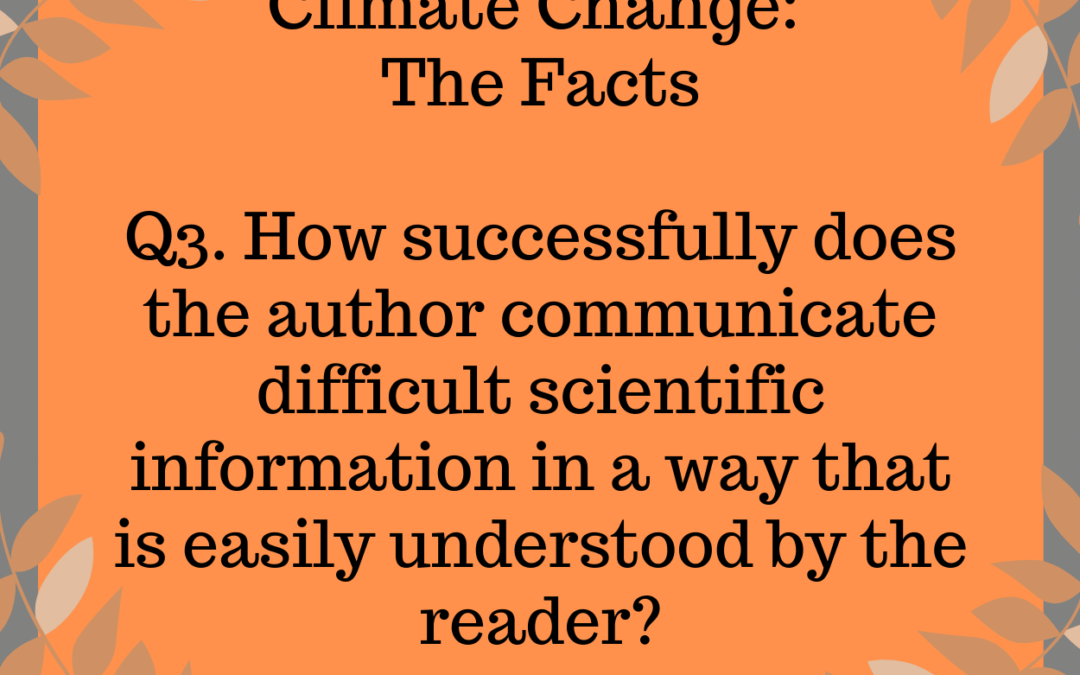Edexcel English IGCSE: Climate Change: The Facts
Q3. How successfully does the author communicate difficult scientific information in a way that is easily understood by the reader?
Edexcel English IGCSE Model Essay by an Expert
In ‘Climate Change: The Facts’, the article is clearly designed for people who are not experts in science. The writer effectively communicates difficult scientific information with a clear layout and helpful pictures, and language which is not intimidatingly technical.
Throughout the article, the writer creates a conversational tone, even when describing complex scientific phenomena. This ‘chatty’ tone begins even in the headline of the article, with the use of questions and non-standard English. The questions begin with connectives – “but” and “and” – which is not generally accepted in formal English. As a result, the headline reads like spoken English, rather than as a dry, informative article. The questions in the headline also create an curious tone, as if the writer and reader will go on a journey of discovery together. The question-and-answer format in the article creates a clear layout which makes the article easier to read. It also acknowledges the complexity of the issue; it is something which people have lots of questions about. By acknowledging this complexity, the writer reassures the reader that the content will be explained simply and clearly.
When describing complicated scientific occurrences, the writer ensures that the tone does not become too heavy. Non-scientific language is employed to avoid scientific jargon, and to help the reader understand the science behind climate change. For example, oceans and trees are said to “mop up” heat, methane “hangs around” and oceans are “burping” methane into the atmosphere. These colloquial terms are interspersed with more scientific language. This combination allows the writer to strike the balance between providing information that sounds reliable and educational, and allowing this information to be accessible to the reader. This balance is also seen in the writer’s use of statistics. Throughout the article, specific statistics lend authority to the information. However, more general and colloquial terminology is also used, to ensure that the statistical information is easily understood, for example “sky high”, “steady rise” and “far more potent”.
Finally, the pictures and diagrams provide easy-to-understand visual representations of the information provided in the article. They contain bright, primary colours, which create the impression of simplicity. In general, the images appear non-threatening, particularly the largest image, which contains decorative additions (such as the river and cityscape) to make the image appealing. In both images, arrows are used to assist the reader’s understanding, and in the middle image, the ‘steps’ are numbered, to help the reader follow the progression of events. The graphs provide visual aids, without needing to be fully understood. On the right-hand graph, the reader can clearly see that temperatures are forecasted to rise, without necessarily needing a detailed understanding of everything on the graph.
By avoiding technical jargon and ensuring that the layout and design of the article is accessible, the writer succeeds in portraying complex scientific information in an accessible way.



